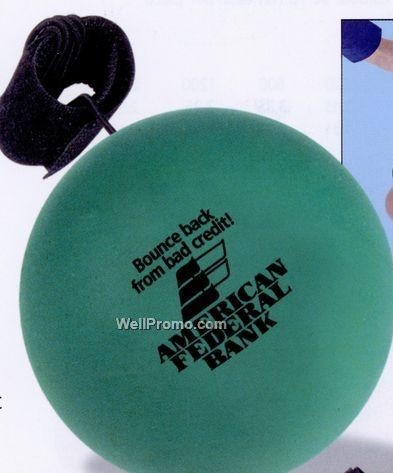Bouncing back_1
Post on: 19 Апрель, 2015 No Comment

EUROPES single currency is 22 months old. In almost every one of those months its value has fallen on the foreign-exchange markets. It hit yet another new low against the dollar on October 25th, of just below 83 cents, 30% below the rate at which it started life. It is 15 years since the “synthetic” euro (a weighted average of its predecessor currencies) was worth so little. Occasionally, it has managed a tentative step upwards—but this has invariably been a prelude to a further two steps down. Anyone claiming to find reasons to hope for the euros revival is sure to be accused of clutching at straws.
Lately, however, there have been a few more solid signs of improvement. The euro was helped away from its latest nadir by evidence that the American economy may be slowing, and by hints from officials in both America and Europe that they might repeat Septembers foreign-exchange market intervention, which bought the currency a couple of weeks respite.
Saddam Hussein, of all people, also did his bit by insisting that Iraq be paid for its oil exports in euros instead of the devils gold (dollars to you). Yet it remains too early to be sure of a sustained recovery in the euro. By November 2nd, when the European Central Bank left interest rates unchanged at 4.75%, as expected, it had blipped up, but only to around 86 cents.
In this section
If any of these straws is worth clutching, it is the American data. The principal force pushing the euro down against the dollar has been the belief of investors everywhere, including in the euro-area countries, that fast-growing America is a better place in which to stick their money than tired old Europe. Quarter after quarter, the remorseless economic strength of the United States has reinforced their faith. Yet American GDP grew at an annual rate of only 2.7% in the third quarter, rather slower than expected. It is likely that in the same quarter the euro areas GDP grew faster than Americas for the first time since the fourth quarter of 1997. In addition, the monthly National Association of Purchasing Managements index fell in October for the third month running, suggesting a contraction in American manufacturing. On the other hand, much of the slowdown in America was due to a sharp contraction in government spending, which may be reversed after the election; consumers are still spending freely.
Buying American
The big question for the currency markets is whether anything is happening that will reverse the flood of capital out of euros and into dollars. This year European companies have been buying American rivals in droves. The flow in the other direction has been far smaller. Deutsche Bank calculates that a net $167 billion of M&A capital poured into the United States in the first nine months of this year, mostly from Europe. In sum, euro-area companies have spent a net $271 billion abroad.
The flow of M&A money does not seem to be changing direction. Foreign firms still regard America as the place to be, not only for its economy but because its laws, taxes and institutions make corporate purchases much more attractive and simpler to do than in the euro area. Although the euro area is getting a lot of attention from buy-out funds, says Alan Jones, co-head of global leveraged finance at Morgan Stanley Dean Witter in New York, he can point to only one notable deal that has been done, the takeover by Kohlberg, Kravis & Roberts ( KKR ) of the chemical business of Laporte, a French conglomerate. Doing deals in Britain, where capitalism is more like America, is still far easier than in France or Germany. In all, estimates Deutsche Bank, foreign firms spent a net $50 billion on British M&A in the first nine months of this year.
Yet huge as all this M&A activity is, how much impact it has on exchange rates is open to question. Quite a few of the takeovers, points out Rudi Dornbusch, an economist at the Massachusetts Institute of Technology, are paid for with shares, not cash, and therefore have no implications for the demand for and supply of currencies. Even the impact of a cash deal, says Paul Meggyesi of Deutsche Bank, is unclear. If a European purchaser of an American firm already has dollar deposits, say, it has no need to sell euros and buy dollars. Or it may be able to borrow in dollars, without selling euros.
For the exchange rate, portfolio flows—cross-border purchases of shares and bonds—probably matter more than M&A. Here too, the flow is against Europe. But things may be changing. “There has been a peak in terms of portfolio investment,” says Avinash Persaud of State Street, a Boston bank, which has a unique proprietary database of portfolio flows. “European investors have lost some of their appetite [for America]. Theyre still buying, but the rate has slowed.” Recently outside investors have been net buyers of euro-area bonds, while since August there have also been signs of a revival of interest in equities (see chart).

For now, this shift is being countered by three things. Oil-exporting countries have reinvested their gains from higher oil prices in dollar assets. Surprisingly, the drop in high-tech share prices has probably helped the greenback, says Mr Persaud. American investors have sold tech stocks everywhere—in Frankfurt and Tokyo as well as New York—and run back to the United States, switching into more traditional investments and cash.
And there remains a great deal of euro-pessimism in the markets. “The euro turned out to be a failed initial public offering,” says Mr Dornbusch, accusing it of the ultimate crime in todays markets. Alison Cottrell, an economist at UBS PaineWebber, a stockbroker, says that each drop in the euro turns off another clutch of portfolio managers who have previously stuck with the currency through thin and thin, and who decide to sell into the next rise. A long run of happy surprises from America has had the opposite effect on sentiment towards the dollar. “The burden of proof is on the euro,” she says.
So the euro could yet fall back again, even though most economists (or those daft enough to guess) think it is undervalued by 20-30%. There is no surefire method for calculating a currencys fundamental value. It is not hard to think of things that might upset it further. A win for George W. Bush in next weeks American presidential election, some think, might be bad for the euro, because Lawrence Lindsey, Mr Bushs main economic adviser, recently decried intervention. So would a fourth-quarter bounce in American growth. So might another unfortunate remark by a central banker or a politician.
Not even well-known euro-optimists are expecting the euro to soar fast. Remember, says Klaus Friedrich, chief economist at Dresdner Bank in Frankfurt, that it took the markets an age to accept that low inflation was likely to endure. But he points out that European stockmarkets have done better than Americas this year, in own-currency terms; it is only because of the falling euro that euro-area investors have done better by putting their money in America. If investors twig that European companies arent such bad investments after all, he says, it will not be so easy for America to finance its current-account deficit with European savings—and that points only one way for the dollar.
In the end, though, the euros fate rests with the American economy, and whether it really is slowing. Even if the currency has now hit bottom, that is not exactly a triumph for what was supposed to be the symbol of Europes arrival as an equal to the superpower across the pond.














